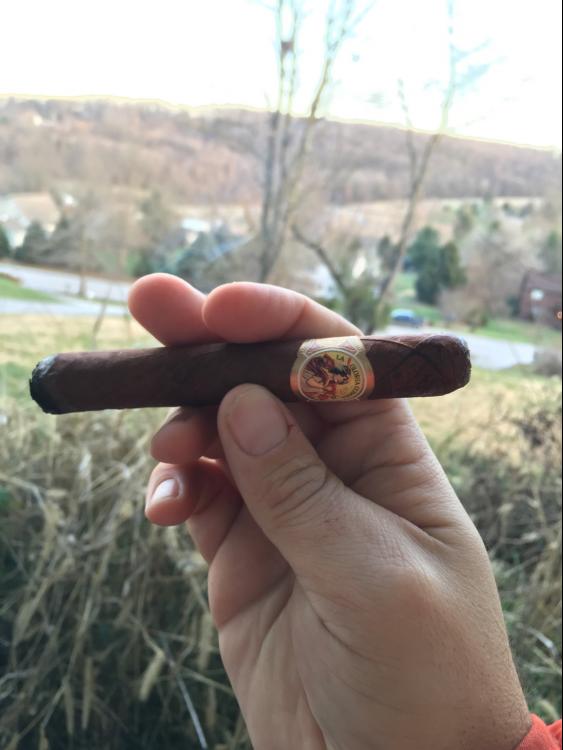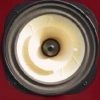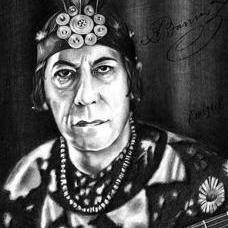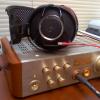Leaderboard
Popular Content
Showing content with the highest reputation on 01/14/2016 in Posts
-
2 points
-
2 points
-
James lin came up with this, I turned it into a circuit board. cascaded current sources et all. http://gilmore.chem.northwestern.edu/srxschematic.jpg http://gilmore.chem.northwestern.edu/srx6.jpg http://gilmore.chem.northwestern.edu/boards/srx6.zip I did make a few changes including balanced input1 point
-
1 point
-
1 point
-
Got the HEK in today, spent a few hours with them. Not bad at all. Somewhat unique presentation to my stalwart HD800s -- I feel I get a long more string noise, pedal squeak, valve thunk, etc. Same amount of music, just more of all the little ancillary bits, which surprises me. My main setup has always operated on the "high end thunderdome" principle, whereby you can only keep your favorite, and all comparison only serves the purpose of figuring out what to get rid of. I didn't buy these, and I have to eventually return them to Fang, so it's a treat to be able to listen comfortably in my own rig knowing that I don't have to decide whether I like them better than anything else. They make my ears real hot, though.1 point
-
Bugger, bugger, bugger - two massive losses within a few days. Both at 69, both from cancer. Remember Rickman as the Sheriff of Nottingham? "When we get him I'll cut out his heart with a spoon" "Why with a spoon?" "Because it will hurt more!" One of the best interviews with Bowie, by Johnathon Ross - Bowie, at that time 55 and looking great and relaxed, with a whole bunch of music.1 point
-
Not sure yet but this is Stax, they always release a fixed version. I'm half joking but also been burnt enough times to not get a first of anything from them.1 point
-
Exactly as designed. Not that HF matters as much as before to the big names, as their new products are built and priced to attract the purses of Chinese graft. What defect?1 point
-
007 vs. 009 perpetual motion debate dripping from HF to HC, who whould have believed that ? Ali1 point
-
My experience is... the 007 with lesser amps has a honky and recessed (veiled) colouration, whilst it vastly improves and opens up as the amp scales, I can still hear this colouration it even with a BHSE. The 009 maintains a better consistency of sound signature using different amps, as well as scaling with better amps and I cannot for the life of me hear any colouration, in fact I’d say I can hear a lot more of what’s going on upstream than the phone itself.1 point
-
Thanks all! I had a nice little day. Busy, but no crisis work day. Great dinner with the family at Gaetano's, a nice Italian place nearby. Anne got me a Tasting Whiskey book and a Beer Sayings desk calendar. She must think I drink a lot. Kids made some cute homemade artwork (which apparently is still in process), then put on a goofy play. Browns hired what appears to be an actual NFL coach. And Anne scored a table at Grace Restaurant in two weeks, really excited about that!1 point
-
I write off people who like the WES or LL better than the BH or HV off on principal. No other information needed.1 point
-
Actually, one of the advantages of using a cathode tail constant current source (CCS) is that it is very INdependent of the voltage at its far end, as long as you don't exceed the power dissipation of the CCS, so anything from about 10 volts up will work. I used two resistors because I wanted to bias the output filaments near the cathode voltage of the 6SN7GTA tubes, but if you don't need that (you can just let the filaments float), you can calculate the needed dropping resistor as follows: R (dropping resistor) = [(B- voltage) - 20]/2.6 mA. If you use the original 300k plate resistors for the inputs, use 2.2 mA instead of 2.6 mA. So, for example, for B- voltage = -350volts, R = [350-20]/.0022 = 150k, Hmm, I need to make a correction. For my 325 volt build and 250k plate resistors, the total R should be around 125k, not 143k.1 point
-
I think the whole SR009 vs. SR007 thing is just boil down to personal preference Birgir. I have several people who have stopped by and listening to both phones out of several of my amps, and 65% actually prefer the SR009 while the remainder just like the SR007 better. At a recent Atlanta meet, I have one person liking the SR007 better out of the Carbon while the another 5-6 clearly prefer the SR009. This same gentlemen also prefer his LCD3 over the HD-800. My close friend who is also a musician seem to dig the SR009 better.1 point
-
Yeah, absolutely in agreement on the bolded section. Man, I couldn't do that. To me, it'd be more like a deadline, I'd have to wrap up whatever I was working on and make sure it was finished to the point I could turn the reigns over to someone else before I passed. I mean, without deadlines, I'd get nothing done, so if/when I finally release a recording, expect my imminent death to follow. Don't worry, that's not as morbid as it sounds, I haven't even started into pre-production.1 point
-
Yeah, that is a pain. You have to hover over the quoted post until you see a + with arrows box in the upper left corner. You click on that and then can hit delete.1 point
-
1 point
-
The first great headphones I ever owned were a pair of Stax Lambda NB. I got them accidentally, almost, by winning an eBay auction for a normal bias energizer for like $6, then realizing it could only drive normal bias 'stats. That drove me here, as I recall, to ask about a good amp for them. HC's recommendation? KGBH. Fuck you guys, I love you all.1 point
-
Gotta be a part of the groupthink, perish the thought of having ones own ideas. Seriously though, Purrin is no better than Jude with his clan mentality and favoritism. As for the Stax, haven't tried the L700 yet (waiting for Stax to release the inevitable fixed version) but many of the older Lambdas are excellent. I've recently bought the SR-SC1, 404LE, 404 (why not) and Lambda Nova Signature. All of these are good to excellent and if you can find a set in good nic then it will last for a long time.1 point
-
About the B+/B- output: the zener strings as specified do produce +/-400V rails. If you want +/-350, change both zener strings to add up to 350. I suggest you actually use a zener string adding up to 340 or slightly less, since zeners tend to run at a higher voltage when warmed up, i.e., if you make them add up to 350, you'll probably end up with 360 or more. I also hand-match zeners so they really do add up to the rated voltage, since they're normally within 5% tolerance, but's probably overkill. Not sure about the -20V line.1 point
-
Oh, we're in agreement.... I compare to someone like Johnny Cash. (My interpretation) As he got older and saw his mortality, he kept on and sang music of some great reflection, "accepting" his death. To me, Bowie saw it and USED it as part of his art. That's what I mean by martyr....not that he WANTED to die, but facing it was done in a way that only he could.1 point
-
1 point
-
A couple more comments: 1) Since the SRX circuit is inherently balanced, it's easy to have a balanced input - just disconnect the grounded half of the input circuit and use it for the negative input. For unbalanced input, just connect the negative input to ground. 2) Haven't tried the LND150 for the input stage current sink, but my unit the DN2540 worked fine. I tried a J113 and 2SK170 as the lower device in the cascode with the DN2540 as the upper device but the DN2540 for both devices worked best. The input current sink runs about 1.3 mA - 650 uA/section - I used the TO92 version rather than the TO220 that Kevin has on the board. 3) Let me re-emphasize that with B+ and B- > 300 volts, you CANNOT use 6SN7 or 5692 tubes. Use 6SN7GTA or GTB tubes ONLY in the output unless you enjoy burning up expensive tubes. The 6SN7 is specified at 300 volts max plate voltage and 5 watts combined plate dissipation, the 6SN7GTA/B are specified at 450 volts max plate voltage, 7.5 watts combined plate dissipation and 1500 peak positive pulse plate voltage. Most of the new old stock (NOS) 6SN7s that are going for silly money are the original version. NOS 6SN7GTA/B are still available at reasonable prices, and there are also new manufacture 6SN7GTAs. 4) I haven't tried this, but if you use 6BX7 tubes for outputs you could crank the power supply up to 400 volts, increase the output current loads to 10 mA and the output current sink to 23 mA - might have to upgrade the heatsinks though. Frequency response should be about the same but more current drive for the headphones.1 point
-
Thanks for posting this, Kevin. I've submitted a full article to AudioXpress which I hope will be coming out in a few months. It contains a very detailed analysis of the basic SRX circuit and the modifications I have made. In the meanwhile just a few comments. 1) the use of current sources in the output stage is very important. With anode resistors in the output stage, the resistors are much lower impedance than the headphones themselves, whereas with cascoded current sources, the headphones are significantly lower impedance than the current sources. To put it another way, they convert an amp for driving anode resistors into an amp for driving headphones. Because the 6SN7 tubes are not nearly as high power as a EL34, this makes a significant difference. 2) My crude measurements of a cascoded current load puts the impedance at > 160 megohms, which means at 20 Hz about 2/3rds of the signal current is going to the headphones, and by 100 Hz, 90% of the signal current is going to the headphones. 3) all the current sources are adjustable. In the input stage the current source should be set at about 1.3 mA, so that the plate of the upper 12AT7 is about halfway between ground and B+. The output current loads should be set for 7 mA, and the output current sink should be set for about 17 mA. The resistor string between B+ and the output current sink gives a pathway for the excess 3 mA of current difference between the current loads and the current sink. The output current sink should be adjusted to zero the output plate voltage - anything less than 10 volts from ground is acceptable. 4) I'm currently running my unit with B+ at about 325 volts, B- at about -325 volts using a TL431 based shunt regulated power supply. The schematic of that power supply will be in the article. I know there have been experiments posted here using the TL431 for a regulator that commented on turn-on instabilities and oscillation, however I found a Texas Instruments application note on how to correct that problem, and my version seems to be stable. 5) For the input stage I recommend ONLY 12AT7 tubes for the lower cascode tube, as substituting a 12AX7, for example, will decrease the gain of the input stage by about 15%. However, substituting a 12AX7 or 5751 for the upper cascode tube will have negligible effect on the input stage gain or output impedance, and may alter the sonic flavor of the circuit. 6) The measured frequency response with my Fluke 189 meter was flat between 20 Hz and 20 kHz and -1 dB at 50 kHz at 20 volts RMS output. With an additional 100 pf load (equivalent to a Stax SR007 or 009, plus the load of the meter) the high frequency response was -3dB at 46 kHz at 100 volts RMS output. 7) I built this in the spirit of a Stax Mafia Volksamp. I appreciate the fact that Kevin Gilmore thought well enough of it that he spent his time and effort to design a really nice board for it. Finally, I want to thank Kevin Gilmore for correcting a beginner mistake on the amp schemata. I built it correctly, I just drew it incorrectly. )1 point














